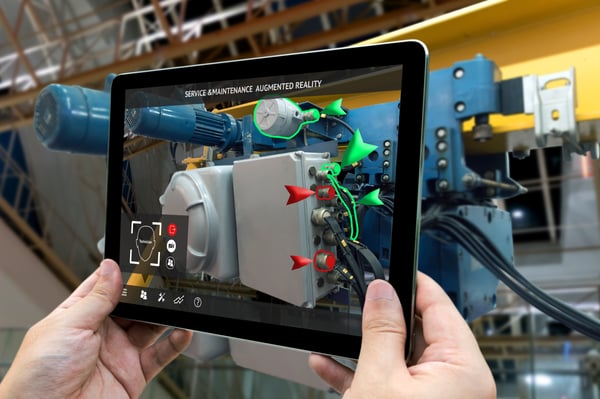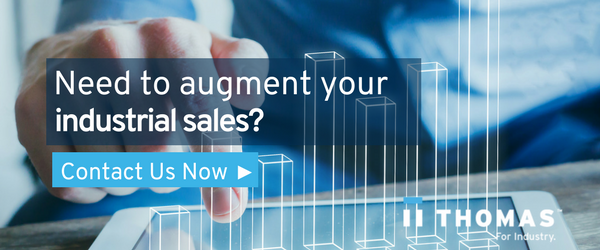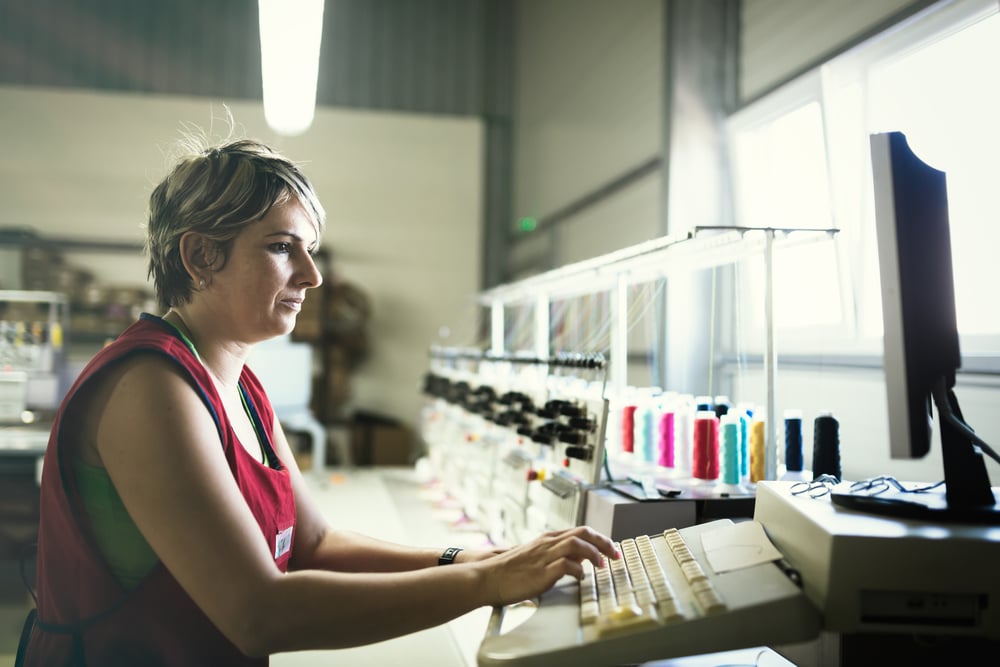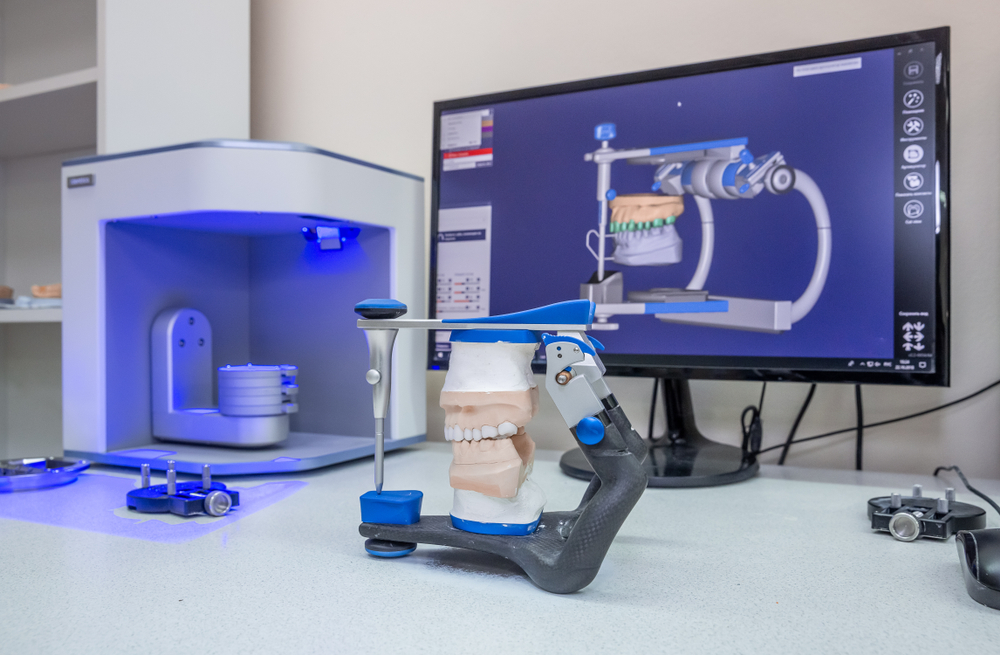How Augmented Reality Will Disrupt The Manufacturing Industry
Megan Ray Nichols January 9, 2019
Virtual reality and augmented reality are in the same vein when it comes to modern technology. They both deal with digital content relayed through an immersive environment or experience. The difference, however, is how encompassing that experience truly is.
With virtual reality, you don a headset that fully delves you into a new world or environment, some that even mimic the real world. You’re given both a visual and audible experience that is meant to take you away from known reality.
Augmented reality is similar in concept, but it also displays digital content in the real world. Think Pokemon Go or IKEA’s Place app, both of which allow you to interact with and experience digital objects.

Due to the nature of these two technologies, they are used in completely different situations. Augmented reality, for example, could be enabled through the use of eyeglasses or a simple display piece, changing the modern experience for construction workers, plant workers, delivery personnel and much more.
You wouldn’t want workers in these industries to stumble around with a virtual reality headset on, however, because it would impede their movements and prevent them from interacting with the real world. Augmented reality devices, on the other hand, make this much more natural and seamless.
Why Augmented Reality Will Disrupt Manufacturing
That brings us to the variety of uses for the technology in enterprise and business. In construction, for instance, workers could use AR wearables to measure various changes, identify unsafe working conditions, or even visualize a finished product or structure.
In manufacturing, the technology can be used in much the same way. The beauty of it is that you can use it to present more than digital characters, images, or content. You can also overlay text, stats, and information relevant to the worker’s current task. Looking at a furnace or piece of equipment might show its current running temperature, revealing it as hot and unsafe to touch with your bare hands.
Just the concept of this tech sounds like something from a sci-fi movie, but this is the reality we live in. These devices will become more commonplace everywhere, not just in a single industry. Augmented reality glasses are forecasted to reach around 19.1 million units by 2021, and when combined with VR devices, could hit 59.2 million units.
Imagine knowing everything that’s happening around you, including whereabouts of colleagues, what machinery is malfunctioning, or even what parts of a factory are off limits. These are just a few things an augmented reality device can tell you.
There’s much more the tech can be used for. Here are some ways it can be leveraged in the manufacturing industry.
Hands-On And Safety Training
In manufacturing, one of the issues with putting rookies and new talent on the floor is that they are unfamiliar with necessary protocols, equipment, and procedures. This can lead to safety issues. With the right AR applications and devices, these inexperienced personnel can be trained, informed, and protected at all times without wasting additional resources.
They could, for example, shadow existing personnel but remain out of the way to observe. The AR system would deliver the necessary updates and information to help them understand what’s happening, why, and how that relates to their duties.
This could even be leveraged to put them right to work — albeit through smaller, less dangerous tasks that require little to no oversight. Atheer, an industrial tech company, has already crafted an experience remarkably similar to this. Its enterprise-centric AR application offers step-by-step task guidance, contextual documentation and manuals, additional resources, and even barcode scanning for quick help.
We’re talking about the potential for students and novices to start a career in industrial maintenance and engineering early, while also getting hands-on experience along the way. It’s an incredible opportunity and one that deserves further exploration.
Technical training and development can be costly when dealing with large, complex pieces of machinery or dangerous equipment. Jaguar Land Rover (JLR) teamed up with Bosch using the REFLEKT ONE or BOSCH CAP software platform to develop an application that visualized and provided “X-ray” vision into the Range Rover Sport vehicle dashboard. The app allows technicians in training to see everything behind the paneling without removing and then reinstalling the dashboard.
Streamlined Logistics
When it comes to order fulfillment and warehouse organization, employees must multitask to manage orders and regular duties. Let’s say an order comes in, for example. A worker has to check the information, find the necessary product or goods, scan it and report the data, deliver it to the loading dock, and then sign off on the order. That’s a lot of manual work, which can balloon the time it takes to finish a simple, yet tedious process.
With emerging AR technologies, however, those same workers could tap into a connected system that tells them exactly where products and goods are, allowing them to work at a much faster pace. Better yet, they could scan the necessary information using the AR system, which could then be designed to propagate the order. Then, all the employee would need to do is fetch the product and deliver it to the correct party.
Popular shipping and freight service DHL is already testing mobile AR systems in local environments. DHL employees use smart glasses from wearable computing solutions expert, Ubimax that greatly increase productivity, and reduce errors. The company began utilizing smart glass technology back in 2015, but has recently announced plans to expand efforts in augmented reality, robotics, process automation, and Internet of Things in 350 of its 430 facilities in North America. With exponential growth in e-commerce, the company plans to make a staggering $300 million investment.
Maintenance
Imagine if your maintenance crew could see exactly what equipment and hardware needed servicing, as well as any potential issues. Better yet, imagine if that same system were expanded to show them operation times, date of last service, potential points of failure, and much more.
A maintenance crew could don an AR device that relays this information every time they visit the factory or warehouse floor. This would take the guesswork out of the process, allowing for faster repairs, quicker response and recovery times, and better operations all around.
The U.S. Marines are already using a system similar to this for their mechanics.
Product Design And Development
Concepting, prototyping, and traditional design can be incredibly lengthy and resource-intensive processes. They also require several revisions and back-and-forth communications between related parties. That’s before anything is even passed to production and manufacturing, which also requires further review before a final production is launched.
AR can eliminate some of the tedium of this process by augmenting and enhancing the task at hand, and streamlining collaboration and communication between parties. Imagine if a director or executive can see the actual product being designed and constructed in real-time through AR. They could provide insights and direction that would eliminate the back-and-forth that many conceptual systems require.
Thyssenkrupp is incorporating the latest technologies into product design and development of mobility solutions. The company incorporated HoloLens solutions to make the design process more personal for customers and to reduce turnaround time. The HoloLens AR technology has digitally transformed the process across many phases of production from the beginning of the sales cycle all the way through the manufacturing process.
With the help of the HoloLens, the digitization of sales and manufacturing has reduced delivery times by 400%.
Complex Assembly
Modern manufacturing involves putting together hundreds and thousands of pieces in complex assemblies at quickly as possible. Whether you're manufacturing the latest smartphone or the world's largest airliners, assembly instructions need to be followed.
With 130 miles worth of wiring in every new Boeing 747-8 Freighter, this world-leading aviation giant eases the task with smart glasses and the Skylight platform from Upskill. Skylight is a wearable technology that gives Boeing technicians the instructions they need right in their viewfinder. With voice command capabilities, and bar code readers this is a huge time saver that has improved productivity, produced higher quality, and better ergonomics.
The result? Boeing has cut wiring production time by 25% and reduced error rates effectively to zero. With no room for error when building an airliner, Boeing takes an array of measures in ensuring that aircrafts are built to the highest standards.
Expert Support
It's obvious that augmented reality is becoming so much more than just placing virtual filters over machine assemblies on a shop floor. AR technology is also being incorporated into support applications so that companies can better provide service to customers.
Leybold, a leading vacuum pump manufacturer, has incorporated augmented reality applications into its onsite customer support and sales activities. The company partnered with REFLEKT, to create The Leybold Maintenance App with their recently introduced TURBOVAC i/ix line of vacuum pumps. The app allows customers to visually explore components and features of the pump on the iPad and HoloLens. Technicians are able to enter “X-ray” vision to view the pump digitally to explore components without having to disassemble the pump.
The Future For Manufacturing
It’s important to remember that the cases discussed here are just a small handful of the true potential this technology has to offer, especially in manufacturing and product development. We’ll have to wait and see where the current market goes from here, because there are almost certainly some scenarios we never thought possible or even imagined. For more insight to how the manufacturing industry is faring, check out the below sources:
Did you find this useful?









